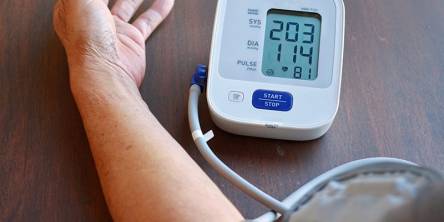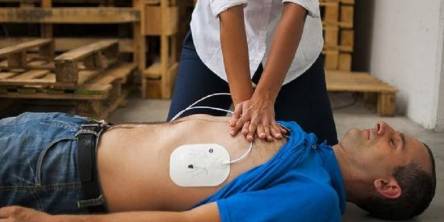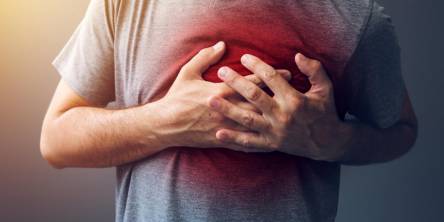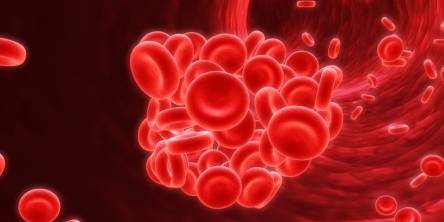Types of Arrhythmia
Arrhythmia is a common name for a group of heart rhythm disorders. Heart arrhythmias may differ in their mechanisms, causes, clinical manifestations, complications and prognosis. Normally, each heartbeat is accompanied by a successive contraction of the heart chambers – atria (the upper heart’s chambers) and ventricles (the lower heart’s chambers). The rhythm of these contractions is provided by the conducting system of the heart consisting of nodes (or bundles of the nerve tissue) that generate electrical impulses and transmit them through the heart. The rhythm and frequency of heart contractions depend on these impulses. Clear rhythm of heart contractions at regular intervals, from 60 to 100 beats per minute (bpm), is a sign of a normal heart function. In arrhythmias, the heart rate changes – it can be irregular, lower or much higher than the norm.
Arrhythmia can be provoked by a number of causes – various cardiovascular disorders, traumatic brain injuries, menopause, adrenal and thyroid disorders, frequent emotional and physical stress, alcohol or tobacco abuse as well as the use of toxic or pharmaceutical substances. Heart rhythm disturbance can persist unnoticed for quite a long time or result in being life-threatening.
There are the following types of arrhythmia:
- Bradycardia. This arrhythmia is characterized by a slow heart rate that is less than 60 bpm. Bradycardia symptoms include weakness, brief loss of consciousness, confusion, dizziness, unstable blood pressure and cold sweats. Bradycardia can result from problems in the sinoatrial node, heart’s conduction pathways, myocardial infarction or metabolic disorders like hypothyroidism. Severe untreated bradycardia can lead to heart failure, angina pectoris as well as hypertension or hypotension.
- Premature atrial and ventricular contractions (extrasystoles). Extrasystoles are essentially extra contractions of the heart that disrupt its normal and regular rhythm. The patient may feel extrasystole as if the heart skips a beat. This type of arrhythmia is usually harmless and most often doesn’t require any treatment unless it’s caused by an injury to the heart or a disease.
- Tachycardia. It’s characterized by too fast hear rate that is higher than 100 bpm.
- Depending on where the fast heart rate starts and how it spreads, there are supraventricular (atrial) and ventricular tachycardias as well as accessory pathways and AV nodal reentrant ones. In tachycardia, the efficiency of the heart function is reduced since the heart beats too fast and thus cannot fill up with enough blood causing less blood to be pumped through the body to its organs and tissues. Tachycardia symptoms include palpitations, anxiety, fainting and dizziness.
- Atrial Fibrillation. It’s quite a common and serious type of arrhythmia that involves irregular and very fast contraction of the heart’s atria occurring when the heart’s electrical activity in the atria is very rapid and unorganized. Atrial fibrillation can cause lightheadedness, palpitations, confusion, chest pain and faintness. It also increases the risk for heart failure and stroke.
- Ventricular Fibrillation. It’s a life-threatening condition and the most serious type of arrhythmia. In ventricular fibrillation, the electrical activity of the heart is disordered which causes the ventricles to contract in an unsynchronized and rapid way and the heart to pump little to no blood. All that leads to sudden cardiac arrest, which is a medical emergency.
- Other Rhythm Disorders:
- Heart block. It happens when the electrical impulse from the atria to the ventricles is delayed or blocked.
- Bundle branch block. It’s characterized by a delay or blockage of the impulses travelling to both ventricles causing one ventricle to contract a bit slower than the other.
- Long Q-T syndrome. It’s a hereditary disorder of the heart’s electrical system.
- Atrial flutter. It’s characterized by quick contractions of the atrial muscles caused by rapidly fired impulses.
- Sick sinus syndrome. The heart’s sinus node doesn’t produce signals properly, which causes the heart rate to change between bradycardia and tachycardia.
- Wolff–Parkinson–White syndrome. Accessory pathways between the atria and ventricles cause electrical signals to spread in both directions instead of one.
Similar Articles
It can be difficult to know when you have high blood pressure because the symptoms and signs are not always obvious. If left unchecked, however, it can gradually damage your blood vessels, heart, kidneys, and other vital body organs. Blood pressure fluctuations can also be dangerous.
A reliable AED plays a vital role in increasing the survival rate of SCA. This post lists 8 reasons to tell why we need a reliable AED device and something you need to know about the AED.
Normal heart rate in people is 60-100 beats per minute. But if the heart rate is lower than 60 beats per minute, that may indicate bradycardia development. If the pulse is constantly 30-40 beats per minute and it doesn’t increase even during physical activity, it’s a quite dangerous condition.
In recent decades, Western medicine has shifted its main focus quite dramatically, from infectious diseases towards cancer and chronic conditions, such as heart, stomach and liver issues.
According to statistics, people suffering from diabetes are 1.5 times more likely to develop a stroke than those who don’t have this disease. So why does it happen? The connection between these two conditions lies in the way the body transforms glucose into energy.
Black, green, white or red teas come from the same plant Camellia Sinensis. The difference lies in the processing method: Green tea is made from the buds and top two leaves of a shrub, which are then quickly steamed to prevent fermentation
Blood clotting is a necessary process that in certain instances prevent the body from losing too much blood. When you get a paper cut or a minor injury, a blood clot stops the bleeding and falls apart.







